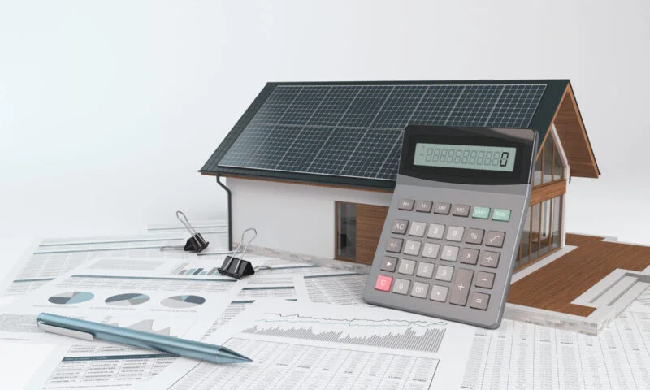Alle Kategorien
-
Integrierte schaltkreise (ICS)
Integrierte schaltkreise (ICS)
- Spezialisierte ICS(35707)
- PMIC-Spannungsregler-besonderer Zweck(1598)
- PMIC-Spannungsregler-lineare Regler(572)
- PMIC-Spannungsregler-linear + Switching(499)
- PMIC-Spannungsregler-linear(27467)
- PMIC-Spannungsregler-DC DC Switching Regulators(20868)
- PMIC-Regler-DC-DC-Switching-Controller(4728)
- PMIC-Spannungs-Referenz(2128)
- PMIC-v/f und f/v-Wandler(47)
- PMIC-Thermal Management(297)
- PMIC-Supervisor(17396)
- PMIC-RMS bis DC-Wandler(555)
- PMIC-Netzteil-Controller, Monitore(723)
- PMIC-Power over Ethernet (PoE) Controller(368)
- PMIC-Power Management-spezialisierte(2708)
- PMIC-Netzschalter, Treiber laden(1429)
- PMIC-PFC (Power Factor Correction)(320)
- PMIC oder Steuerungen, ideale Dioden(290)
- PMIC-Motor-Treiber, Regler(1166)
- PMIC-Beleuchtung, Ballast-Regler(1745)
- PMIC-LED-Treiber(11607)
- PMIC-Laser-Treiber(2349)
- PMIC-Hot-Swap-Controller(2468)
- PMIC-Gate-Treiber(5085)
- PMIC-voll, Half-Bridge-Treiber(364)
- PMIC-Energy Messung(2378)
- PMIC-Display-Treiber(4466)
- PMIC-derzeitige Regulierung/Management(732)
- PMIC-Batterie-Management(3519)
- PMIC-Ladegeräte(46080)
- PMIC-AC DC Konverter, Offline Schalter(21202)
- Memory-Controller(9982)
- Memory-Konfigurations-Proms für FPGAs(7695)
- Speicher-Akkus(130)
- Memory(19527)
- Memory(19527)
- Logic-universelle Bus-Funktionen(31014)
- Logic-Übersetzer, Level-Shifter(755)
- Logik-Specialty Logic(1916)
- Logik-Signal-Schalter, Multiplexer, Decoder(3447)
- Logic-Shift-Register(6058)
- Logic-Parity Generatoren und Checkers(6682)
- Logic-multivibratoren(1274)
- Logik-Latches(1535)
- Logik - Tore und Wechselrichter - Multifunktion, konfigurierbar(4223)
- Logik-Tore und Wechselrichter(5667)
- Logic-Flip Flops(7964)
- Logik-FIFOs Speicher(1236)
- Logik-Zähler, Trennlinien(3350)
- Logik-Vergleichsoperator(5892)
- Logik-Puffer, Treiber, Receiver, Transceiver(6630)
- Linear-Video-Verarbeitung(1075)
- Linear-Vergleichsoperator(2312)
- Linear-analoge Multiplikatoren, Trennwände(1237)
- Linear-Verstärker-Video Amps und Module(3822)
- Linear-Verstärker-Spezial-Zweck(3334)
- Linear - Verstärker - Instrumentierung, OP -Verstärker, Pufferverstärker(11463)
- Linear-Verstärker-Audio(971)
- Interface-Voice Record und Playback(634)
- Schnittstelle - UARTs (Universal Asynchronous Receivers -Sender)(133)
- Schnittstelle-Telecom(47636)
- Interface-spezialisierte(1301)
- Interface-Signal Terminatoren(2351)
- Interface-Signal-Puffer, Repeater, Splitter(1834)
- Interface-Serializer, Deserializer(7226)
- Schnittstellen-Sensor und Detektor-Interfaces(2321)
- Interface-Module(230)
- Interface-Modems-ICS und Module(668)
- Interface-e/a-Expander(2822)
- Interface-Filter-aktiv(1524)
- Interface-Encoder, Decoder, Konverter(11802)
- Interface-Treiber, Receiver, Transceiver(10390)
- Interface-Direct Digital Synthesis (DDS)(3471)
- Interface-Controller(3245)
- Interface-Codecs(583)
- Schnittstelle - Analoge Switches, Multiplexer, Demultiplexer(15690)
- Schnittstelle-analoge Schalter-spezieller Zweck(2961)
- Embedded-System on Chip (SoC)(6429)
- Embedded-PLDs (programmierbare Logik-Vorrichtung)(613)
- Embedded-Mikroprozessoren(5164)
- Embedded-Mikrocontroller-anwendungsspezifische(2091)
- Embedded-Mikrocontroller(59305)
- Eingebettet - Mikrocontroller, Mikroprozessor, FPGA -Module(4518)
- Eingebettet - FPGAs (Feldprogrammiergate -Array) mit Mikrocontrollern(557)
- Embedded-FPGAs (Field Programmable Gate Array)(7189)
- Embedded-DSP (Digital Signal Processors)(4650)
- Eingebettet - CPLDs (komplexe programmierbare Logikgeräte)(4971)
- Datenerfassung-Touch Screen Controller(596)
- Datenerfassung-Digital to Analog Converter (DAC)(5044)
- Datenerfassung-digitale Potentiometer(1879)
- Datenerfassung-analog zu Digital Converters (ADC)(5134)
- Datenerfassung-analoges Frontend (AFE)(227)
- Datenerfassung-MDE/DACs-spezieller Zweck(922)
- Clock/Timing-Uhren in Echtzeit(1372)
- Uhr/Timing - programmierbare Timer und Oszillatoren(1504)
- Clock/Timing-IC-Akkus(492)
- Takt/Timing-Delay Lines(16538)
- Uhr/Timing - Uhrengeneratoren, PLLS, Frequenzsynthesizer(20093)
- Clock/Timing-Clock Puffer, Treiber(3531)
- Clock/Timing-anwendungsspezifische(3433)
- Audio Spezial-Zweck(9718)
-
Diskrete Halbleiter-Produkte
Diskrete Halbleiter-Produkte
- Aktuelle Regulierung - Dioden, Transistoren(775)
- Transistoren-besonderer Zweck(64)
- Transistoren-programmierbare Unijunction(1584)
- Transistoren-jfets(1690)
- Transistoren-IGBTs-Einzel(6032)
- Transistoren-IGBTs-Module(1087)
- Transistoren-IGBTs-Arrays(9)
- Transistoren-FETs, MOSFETs-Einzel(16037)
- Transistoren-FETs, MOSFETs-RF(3251)
- Transistoren-FETs, MOSFETs-Arrays(6376)
- Transistoren-Bipolar (BJT)-einzeln, Pre-biased(4478)
- Transistoren-Bipolar (BJT)-Einzel(12624)
- Transistoren-Bipolar (BJT)-RF(488)
- Transistoren-bipolare (BJT)-Arrays, Pre-biased(6311)
- Transistoren-bipolare (BJT)-Arrays(1394)
- Thyristor-triacs(1128)
- Thyristoren-SCRs-Module(1141)
- Thyristoren-SCRs(2752)
- Thyristoren-diacs, sidacs(164)
- Power Driver Module(4744)
- Dioden-zenerdioden-Einzel(43480)
- Dioden-zenerdioden-Arrays(113195)
- Dioden - variable Kapazität (Varik, Varaktoren)(718)
- Dioden-RF(1765)
- Dioden-Gleichrichter-Einzel(31894)
- Dioden-Gleichrichter-Arrays(8627)
- Dioden-Brücke-Gleichrichter(20238)
-
RF/if und RFID
RF/if und RFID
- SIM -Karten für Abonnenten -Identifikationsmodul (SIM)(41)
- RF -Zirkulatoren und Isolatoren(1721)
- RFID, RF-Zugang, Monitoring-ICS(4567)
- RFID Transponder, Tags(240)
- RFID Lesegeräte(1877)
- RFID Evaluation und Development Kits, Boards(67)
- RFID Evaluation und Development Kits, Boards(67)
- RFID Antennen(696)
- RFI und EMI - Abschirm- und Absorbungsmaterialien(8538)
- HF und EMI-Kontakte, Fingerstock und Dichtungen(4004)
- RF Transmitter(1179)
- RF Transceiver Module(4056)
- RF-Transceiver ICS(1553)
- HF-Schalter(8107)
- RF Shields(4991)
- HF-Receiver(639)
- HF -Empfänger, Sender und Transceiver -Einheiten(3515)
- RF Power Divider/Splitter(4268)
- RF Power Controller ICs(595)
- HF-Modulatoren(3958)
- HF-Mixer(4622)
- RF misc ICS und Module(2738)
- HF-Front-End (LNA + PA)(11681)
- HF Evaluation und Development Kits, Boards(1994)
- HF Evaluation und Development Kits, Boards(1994)
- HF-gerichtete Kupplung(2963)
- RF Diplexer(1406)
- RF-Detektoren(175)
- RF-Demodulatoren(256)
- HF-Antennen(7488)
- HF-Verstärker(17487)
- Balun(706)
- Dämpfungsglieder(3204)
-
Optoelektronik
Optoelektronik
- Optomechanisch(338)
- Leuchten(125)
- Laserdioden, Lasermodule - Laserlieferung, Laserfasern(325)
- Hene Lasersysteme(24)
- Hene Laserköpfe(16)
- Hintergrundbeleuchtung anzeigen(31)
- Xenon-Beleuchtung(549)
- Touchscreen-Overlays(249048)
- Panel Indicators, Pilot Lights(47475)
- Optik-Remote-Phosphor-Lichtquelle(2771)
- Optik-Reflektoren(145)
- Optik-leichte Rohre(3353)
- Optik-Objektive(15458)
- LEDs-Spacer, Unentschieden(433)
- LEDs-Lamp-Ersetzungen(24316)
- LEDs - Leiterplattenindikatoren, Arrays, Lichtstäbe, Balkendiagramme(1922)
- LED-thermische Produkte(6703)
- LED-Beleuchtung(39)
- LED-Beleuchtung-weiß(13461)
- LED-Beleuchtung-Farbe(2210)
- LED-Beleuchtung-Maiskolben, Motoren, Module(9508)
- LED-Anzeige-diskret(10227)
- Laserdioden, Module(1345)
- Lampen-Glühlampen, Neons(338506)
- Lampen-Kälte-Fluoreszenz (KKL) & UV(349)
- Wechselrichter(7962)
- Infrarot, UV, sichtbare Strahler(3759)
- Fiber Optics-Transmitter-Antrieb integriert(3523)
- Fiber Optics-Transmitter-diskrete(2743)
- Fiber Optics-Transceiver Module(22925)
- Fiberoptik-Switches, Multiplexer, Demultiplexer(8234)
- Fiberoptik-Receiver(853)
- Fiberoptik-Dämpfung(394)
- Elektrolumineszenz(24758)
- Display, Monitor-Interface Controller(2642)
- Display-Module-Vakuum-Leuchtstofflampen (VFD)(19327)
- Module anzeigen-LED Dot Matrix und Cluster(17654)
- Display-Module-LED-Zeichen und numerische(2162)
- Display-Module-LCD, OLED, Graphic(3487)
- Display-Module-LCD, OLED-Zeichen und numerische(790)
- Display-Blenden, Objektive(288)
- Adresse, Spezialität(2442)
-
Sensoren, Wandler
Sensoren, Wandler
- Ultraschallempfänger, Sender - Industrial(115)
- Temperatursensoren - Thermostate - Mechanisch - Industrielles(1270)
- Temperatursensoren - Analog und digitaler Ausgang - Industrial(169)
- Näherungssensoren - Industrial(7143)
- Drucksensoren, Wandler - Industrie(1835)
- Optische Sensoren - Photonik - Zähler, Detektoren, SPCM (Einzelphotonzählmodul)(726)
- Optische Sensoren - Kameramodule(776)
- Magnetsensoren - Position, Nähe, Geschwindigkeit (Module) - Industrie(138)
- Kraftsensoren - Industrial(265)
- Flusssensoren - Industrielles(137)
- Float, Level Sensoren - Industrial(172)
- Encoder - Industrial(2217)
- Farbsensoren - Industrial(20)
- Berührungssensoren(63)
- Ultraschall-Receiver, Transmitter(986)
- Temperatursensoren-Thermostat-Solid State(333)
- Temperatursensoren-Thermostate-mechanisch(4379)
- Temperatursensoren - Thermoelemente, Temperatursonden(1770)
- Temperatursensoren - RTD (Widerstandstemperaturdetektor)(1653)
- Temperatursensoren-PTC-Thermistoren(2026)
- Temperatursensoren-ntc-thermistoren(7932)
- Temperatursensoren-Analog und Digital Output(2963)
- DMS(1886)
- Spezialisierte Sensoren(3142)
- Solarzellen(688)
- Schock-Sensoren(317)
- Sensor-Interface-Junction-Blöcke(2156)
- Sensor-Kabel-Baugruppen(26522)
- Proximity/Belegung Sensoren-fertige Einheiten(902)
- Näherungsschalter(3322)
- Drucksensoren, Wandler(10275)
- Positionssensoren - Winkel, lineare Positionsmessung(3882)
- Optische Sensoren-reflektierende-Logik-Ausgang(1471)
- Optische Sensoren - reflektierend - analoge Ausgang(1258)
- Optische Sensoren-Phototransistoren(1032)
- Optische Sensoren - Photointerrupter - Schlitztyp - Transistorausgang(513)
- Optische Sensoren - Photointerrupter - Schlitztyp - Logikausgabe(559)
- Optische Sensoren-Lichtschranke, Industrial(12132)
- Optische Sensoren-Photodioden(3168)
- Optische Sensoren-Foto-Detektoren-Remote Receiver(1350)
- Optische Sensoren-Foto-Detektoren-Logik-Ausgang(339)
- Optische Sensoren-Foto-Detektoren-CDs-Zellen(717)
- Optische Sensoren-Maus(1297)
- Optische Sensoren-Distanz-Messung(1412)
- Optische Sensoren-Ambient Light, IR, UV Sensoren(10243)
- Multifunktions(1418)
- Motion Sensors-Vibration(1680)
- Motion Sensors-Tilt Schalter(159)
- Bewegungsmelder-optisch(347)
- Motion Sensors-Neigungssensoren(102)
- Motion Sensors-Imus (Trägheit-Maßeinheiten)(298)
- Motion Sensors-Kreisel(702)
- Motion Sensors-Beschleunigungsmesser(764)
- Magnete-Sensor abgestimmt(152)
- Magnete-Multi Purpose(1871)
- Magnetische Sensoren-Schalter (Solid State)(1519)
- Magnetsensoren - Position, Nähe, Geschwindigkeit (Module)(2148)
- Magnetische Sensoren-linear, Kompass (ICS)(698)
- Magnetsensoren - Kompass, Magnetfeld (Module)(178)
- LVDT -Wandler (linearer variabler Differentialtransformator)(1451)
- IrDA Transceiver-Module(77)
- Bildsensor, Kamera(1272)
- Feuchtigkeit-Sensoren(3880)
- Gas-Sensoren(4294)
- Force Sensoren(1023)
- Durchfluss-Sensoren(440)
- Float, Level Sensoren(634)
- Flex-Sensoren(157)
- Encoder(3440)
- Staub-Sensoren(388)
- Aktuelle Wandler(2256)
- Color Sensoren(49)
- Schnittstelle - Sensor, kapazitive Berührung(356)
- Verstärker(2000)
- Verstärker(2000)
-
Anschlüsse, Verbindungen
Anschlüsse, Verbindungen
- Stecker und Behälter(1710)
- USB, DVI, HDMI Stecker-Adapter(45761)
- USB, DVI, HDMI Stecker(3377)
- USB, DVI, HDMI Stecker(3377)
- Klemmen-Wire to Board Steckverbinder(1604)
- Klemmen-Draht-Steckverbinder(40747)
- Klemmen-Draht-Pin Stecker(12531)
- Terminals-Revolver Steckverbinder(5553)
- Terminals-spezialisierte Steckverbinder(1300)
- Klemmen-Spaten Verbinder(1381)
- Klemmen-Löten/Stecker(2577)
- Klemmen-Verschraubungen(1980)
- Klemmen-Ring Steckverbinder(6682)
- Klemmen-rechteckige Steckverbinder(3878)
- Terminals - Schnellverbindungen, schnelle Trennungsanschlüsse(4695)
- Klemmen-PC PIN, Single Post Connectors(2149)
- Klemmen-PC-Pin-Buchsen, Sockel-Steckverbinder(2222)
- Klemmen-magnetische Draht-Steckverbinder(3357)
- Klemmen-Messer Steckverbinder(3829)
- Klemmen-Gehäuse, Stiefel(1891)
- Klemmen-Folie Steckverbinder(662)
- Klemmen-Barrel, Bullet-Steckverbinder(5430)
- Klemmen-Adapter(713)
- Terminal-Streifen und Revolver-Boards(11368)
- Terminal Junction Systeme(3288)
- Anschlussblöcke-Draht an Bord(19352)
- Terminal Blocks-spezialisierte(2960)
- Terminal Blocks-Power Distribution(499)
- Anschlussblöcke-Panel Mount(522)
- Terminal Blocks-Interface Module(1639)
- Anschlussblöcke-Kopfzeilen, Stecker und Buchsen(148192)
- Anschlussblöcke-DIN-Schiene, Kanal(10920)
- Anschlussblöcke-Kontakte(306247)
- Anschlussblöcke-Barrier Blocks(44736)
- Anschlussblöcke-Adapter(449)
- Solid State Lighting Verbinder-Kontakte(2509)
- Solid State Lighting Steckverbinder(2295)
- Solid State Lighting Steckverbinder(2295)
- Buchsen für ICS, Transistoren-Adapter(765)
- Buchsen für ICS, Transistoren(2223)
- Buchsen für ICS, Transistoren(2223)
- Shunts, Jumper(821)
- Rechteckige Verbinder-Feder geladen(8043)
- Rechteckige Steckverbinder-Gehäuse(28877)
- Rechteckige Verbinder-Kopfzeilen, Spezial-PIN(5397)
- Rechteckige Anschlüsse - Header, Gefäße, weibliche Sockel(23450)
- Rechteckige Verbinder-Kopfzeilen, männliche Pins(138439)
- Rechteckige Anschlüsse - kostenloses Hängen, Panelhalterung(15074)
- Rechteckige Verbinder-Kontakte(5477)
- Rechteckige Anschlüsse - Board in, Direktdraht zum Board(2459)
- Rechteckige Verbinder-Adapter(251)
- Rechteckig - Brett zu Board -Steckern - Header, Behälter, weibliche Sockel(2982)
- Rechteckig - Brett zu Board -Steckern - Header, männliche Stifte(239)
- Rechteckige Anschlüsse - Board -Abstandshalter, Stacker (Board zu Board)(27782)
- Rechteckige Anschlüsse - Arrays, Kantentyp, Mezzanin (Board zu Board)(14186)
- Stromanschluss-Eingänge, Steckdosen, Module(4831)
- Austauschbare Steckverbinder(5229)
- Austauschbare Steckverbinder(5229)
- Photovoltaik- (Solarpanel) Anschlüsse - Kontakte(69363)
- Photovoltaik (Solar Panel) Steckverbinder(365)
- Photovoltaik (Solar Panel) Steckverbinder(365)
- Modulare Steckverbinder-Verdrahtung Blöcke(653)
- Modulare Steckverbinder-Stecker(2164)
- Modulare Steckverbinder-Stecker Gehäuse(3582)
- Modulare Steckverbinder-Buchsen mit magnetischen(4193)
- Modulare Steckverbinder-Buchsen(15464)
- Modulare Steckverbinder-Adapter(503)
- Memory Connectors-PC Cards-Adapter(859)
- Memory Connectors-PC Card Sockets(1904)
- Memory Connectors-Inline Modul Sockets(2493)
- LGH Steckverbinder(1057)
- Keystone-Einsätze(8467)
- Keystone-Frontplatte, Frames(19410)
- Heavy Duty Steckverbinder-Einsätze, Module(213354)
- Schwerlastanschlüsse - Gehäuse, Kapuzen, Basen(449460)
- Heavy Duty Steckverbinder-Frames(16851)
- Heavy Duty Steckverbinder-Kontakte(6325)
- Heavy Duty Steckverbinder-Baugruppen(1730)
- LWL-Steckverbinder-Gehäuse(4852)
- Glasfaser-Steckverbinder - Adapter(2754)
- LWL-Steckverbinder(215502)
- FFC, FPC (flache flexible) Steckverbinder - Gehäuse(30189)
- FFC, FPC (flache flexible) Anschlüsse - Kontakte(114)
- FFC, FPC (flache flexible) Steckverbinder(12920)
- FFC, FPC (flache flexible) Steckverbinder(12920)
- D-Sub, d-förmige Steckverbinder-Terminatoren(640)
- D-Sub, d-förmige Steckverbinder-Gehäuse(12383)
- D-Sub, d-förmige Steckverbinder-Kontakte(1350)
- D-Sub, D-förmige Steckverbinder-Rückenschalen, Kapuzen(3078)
- D-Sub, d-förmige Steckverbinder-Adapter(976)
- D-Sub Steckverbinder(106471)
- D-förmige Steckverbinder-Centronics(6037)
- Kontakte, Frühling geladen und Druck(7921)
- Kontakte-Multi Purpose(16222)
- Kontakte-"Leadframe"(572)
- Koaxial-Steckverbinder (RF)-Terminatoren(1374)
- Koaxial-Steckverbinder (RF)-Kontakte(279)
- Koaxial-Steckverbinder (RF)-Adapter(5909)
- Koaxial-Steckverbinder (RF)(16068)
- Koaxial-Steckverbinder (RF)(16068)
- Rundsteckverbinder-Gehäuse(221760)
- Rundsteckverbinder-Kontakte(3377)
- Rundsteckverbinder-backschalen und Kabel-Klemmen(44820)
- Rundsteckverbinder-Adapter(7708)
- Rundsteckverbinder(771637)
- Rundsteckverbinder(771637)
- Card Edge Steckverbinder-Gehäuse(577)
- Karte Edge Verbinder-edgeboard Verbinder(497865)
- Card Edge Verbinder-Kontakte(527)
- Card Edge Verbinder-Adapter(2752)
- Blade Type Power Steckverbinder-Gehäuse(2290)
- Blade Type Power Connectors-Kontakte(715)
- Blade-Typ-Stecker(2373)
- Blade-Typ-Stecker(2373)
- Zwischen Serien-Adapter(289)
- Barrel-Stromanschluss(399)
- Barrel-Audio-Anschlüsse(10808)
- Barrel-Audio Adapter(54)
- Banana und Tip Steckverbinder-Buchsen, Stecker(2046)
- Banana and Tip Connectors-Binding Posts(3219)
- Banana und Tip Steckverbinder-Adapter(647)
- Backplane Steckverbinder-spezialisiert(33926)
- Backplane Steckverbinder-Gehäuse(47465)
- Backplane Steckverbinder-Hard metrisch, Standard(7596)
- Backplane Steckverbinder-DIN 41612(4684)
- Backplane Steckverbinder-Kontakte(4419)
- Backplane Connectors-ARINC Einsätze(2322)
- Backplane Steckverbinder-ARINC(3305)
-
Widerstände
-
Kondensatoren
Kondensatoren
- Trimmer, Variable Kondensatoren(1088)
- Dünne Folien-Kondensatoren(1724)
- Tantal-Kondensatoren(79518)
- Tantal-Polymer-Kondensatoren(2486)
- Silizium-Kondensatoren(225)
- Niob Oxide Kondensatoren(128)
- Mica und PTFE Kondensatoren(908)
- Folien-Kondensatoren(89898)
- Elektrische Doppelschichtkondensatoren (EDLC), Superkondensatoren(1644)
- Keramische Kondensatoren(261123)
- Kondensatoren-Netzwerke, Arrays(740)
- Aluminium-Elektrolytkondensatoren(39501)
- Aluminium-Polymer-Kondensatoren(2396)
-
Transformatoren
-
Isolatoren
-
Kristalle, Oszillatoren, Resonatoren
-
Switches
Switches
- Verriegelungsschalter(862)
- Emergency-Stop-Schalter (E-Stop)(752)
- Kabelzugschalter(353)
- Toggle-Schalter(18713)
- Rändelrads Schalter(1050)
- Schalter(9157)
- Snap-Aktion, Endschalter begrenzen(14916)
- Slide-Schalter(24680)
- Selector-Schalter(4460)
- Rotary Switches(5818)
- Rocker Schalter(60676)
- Drucktaste-Schalter-Hall-Effekt(3768)
- Drucktaste Schalter(29541)
- Programmierbare Display-Switches(13202)
- Navigations-Schalter, Joystick(14105)
- Magnetische, Reed-Schalter(604)
- Keypad-Schalter(168067)
- Keylock Schalter(1623)
- DIP Schalter(2977)
- Konfigurierbare Switch-Komponenten-Objektiv(1755)
- Konfigurierbare Schalter-Komponenten-Lichtquelle(1239)
- Konfigurierbare Switch-Komponenten-Contact Block(2781)
- Konfigurierbare Switch-Komponenten-Body(17732)
-
Relais
Relais
- Sicherheitsrelais(722)
- Reedrelais(484)
- Hochfrequenz (RF) -Relais(461)
- Schütze (Festkörper)(64)
- Schütze (elektromechanisch)(10945)
- Kfz-Relais(1280)
- Solid State Relais(3585)
- Signal-Relais, bis zu 2 Ampere(6811)
- Relay-Sockets(869)
- Power Relays, über 2 Ampere(369115)
- E / A-Relaismodule(593)
- I/o-Relay-Module-Input(30134)
- I/o-Relay-Module-Analog(438223)
- I/o-Relay-Modul-Racks(14318)
Einkaufswagen 11 Artikel
| MFR -Teil # | Anzahl |
|---|---|
 MVBLUEFOX-IGC205CSTANDARD CAM;MANY HW OPTIONS | |
 VI-B7Y-CY-F3DC DC CONVERTER 3.3V 33W | |
 EFB0612HA-R00FAN AXIAL 60X10MM 12VDC WIRE | |
 SA324330F35HLRCRYSTAL 33.0000MHZ 12PF SMD | |
CY7C652148-24LTXIUSB Full-Speed Peripherals | |
 AC0603DRE07150RLRES 150 OHM 0.5% 1/10W 0603 | |
 10135739-003LFOCT SPLT RUBGLND 9MM | |
 PF-HT1-15FUSE POWR TH PHOTO 600VDC 15A | |
 72904-222LFDINBC 1/4 STR REC LF CNR | |
 RJSNEG08J08CONN MOD JACK 8P8C R/A UNSHLD | |
 TCMD-13-D-10.00-012MM DOUBLE ROW MALE IDC ASSEMBLY |
Sprache auswählen
Aktuelle Sprache
Deutsch
- English
- Deutsch
- Italia
- Français
- 日本語
- 한국의
- русский
- Svenska
- Nederland
- español
- Português
- polski
- Suomi
- Gaeilge
- Slovenská
- Slovenija
- Čeština
- Melayu
- Magyarország
- Hrvatska
- Dansk
- românesc
- Indonesia
- Ελλάδα
- Български език
- Afrikaans
- IsiXhosa
- isiZulu
- lietuvių
- Maori
- Kongeriket
- Монголулс
- O'zbek
- Tiếng Việt
- हिंदी
- اردو
- Kurdî
- Català
- Bosna
- Euskera
- العربية
- فارسی
- Corsa
- Chicheŵa
- עִבְרִית
- Latviešu
- Hausa
- Беларусь
- አማርኛ
- Republika e Shqipërisë
- Eesti Vabariik
- íslenska
- မြန်မာ
- Македонски
- Lëtzebuergesch
- საქართველო
- Cambodia
- Pilipino
- Azərbaycan
- ພາສາລາວ
- বাংলা ভাষার
- پښتو
- malaɡasʲ
- Кыргыз тили
- Ayiti
- Қазақша
- Samoa
- සිංහල
- ภาษาไทย
- Україна
- Kiswahili
- Cрпски
- Galego
- नेपाली
- Sesotho
- Тоҷикӣ
- Türk dili
- ગુજરાતી
- ಕನ್ನಡkannaḍa
- मराठी
Berechnung der Solarpanelwattage
Zeit: 2024/10/25
Durchsuchen: 352
Katalog

Ausgang des Solarpanels verstehen
Um zu verstehen, wie viel Energie Sonnenkollektoren produzieren können, betrachten Sie zunächst Ihren Energiebedarf.Erstellen Sie eine Liste aller Geräte, die Sie mit Strom versorgen möchten, und überprüfen Sie ihre Leistungsbewertungen auf den Etiketten oder Verpackungen.Berechnen Sie bei Bedarf die Leistung, indem Sie Volt mit AMPs multiplizieren.Finden Sie als Nächstes heraus, wie viele Wattstunden Sie benötigen, indem Sie die Leistung mit der Anzahl der Stunden täglich multiplizieren.Fügen Sie diese hinzu, um die gesamten täglichen Wattstunden zu erhalten.Diese Gesamtsumme hilft Ihnen bei der Verwendung eines Online-Solarrechners, mit dem Sie schätzen können, wie groß Ihr Akku durch Berechnung von Amperstunden sein muss und gleichzeitig überlegt, wie viel Sonnenlicht Ihr Gebiet erhält und wie effizient Ihr Akku ist.
Die Effizienz von Sonnenkollektoren zeigt, wie gut sie Sonnenlicht in Energie umwandeln.Faktoren wie die Qualität der Materialien, die Art der verwendeten Technologie und der Installationswinkel beeinflussen diese Effizienz.Zum Beispiel sind monokristalline Paneele aufgrund ihres Designs normalerweise effizienter als polykristalline, aber sie sind in der Regel teurer.Finden Sie bei der Auswahl von Panels ein Gleichgewicht zwischen Effizienz und Ihrem Budget, basierend auf Ihrem Energiebedarf.
Ihr geografischer Standort ist ebenfalls primär.Wenn Sie in einer sonnigen Gegend leben, benötigen Sie weniger Panels, als wenn Sie in einer wolkigen Region leben.Um herauszufinden, wie viel Sonnenlicht Ihr Gebiet erhält, können Sie Solarkarten verwenden oder lokale Wetterdaten überprüfen.
Die Richtung und der Winkel, in dem Ihre Paneele Gesicht haben, können einen großen Unterschied dazu bewirken, wie viel Sonnenlicht sie bekommen.Panels im rechten Winkel nach Süden funktionieren oft am besten.Regelmäßige Wartung ist auch großartig.Wenn Sie Ihre Panels sauber halten und regelmäßig inspizieren, können sie besser arbeiten und länger dauern.
Die Verwendung von Solartechnologie kann komplizierter sein als nur der Theorie zu folgen.Es ist ein Muss, um sicherzustellen, dass Ihre Geräte mit der Wechselrichterkapazität kompatibel sind, um Stromausfälle zu vermeiden.Wenn Sie sich verschiedene Installationsbeispiele ansehen, zeigt dies, dass das Anpassen Ihres Setups an Ihren spezifischen Standort die Energieleistung im Vergleich zur Verwendung eines Ein-Größe-Ansatzes erheblich verbessern kann.
Sonnenanforderungen und Batterieberechnung
Geben Sie nach dem Sammeln Ihrer Werte sie in einen Online -Solarrechner ein.Diese Taschenrechner können Ihnen dabei helfen, festzustellen, wie viele Batterien Sie benötigen und welche Größe Ihr Solarpanelsystem ist.Die meisten Taschenrechner führen die gleichen Funktionen aus, sodass Sie nicht betonen müssen, welche Sie verwenden sollen.
Der Taschenrechner berücksichtigt Ihre täglichen Wattstunden, wie viele Tage Ihr System ohne Sonnenlicht und die effektive Kapazität Ihrer Batterie bei kalten Temperaturen.Dies hilft, die erforderlichen Verstärkerestunden für Ihre Batteriebank zu bestimmen, was für Solargeneratoren hervorragend ist.
Solarmodule Größen
Um zu berechnen, wie viele Sonnenkollektoren Sie benötigen, betreten Sie Ihren Standort und die durchschnittlichen täglichen Sonnenstunden für diesen Bereich in den Taschenrechner.Solarmodule funktionieren am besten in Bereichen mit höheren Sonnenstunden.Wenn Sie sich über die Sonnenstunden in Ihrer Nähe nicht sicher sind, finden Sie Solar -Insolationskarten, die auf der Lage auf den Standortdaten aufweisen.
Sobald Sie diese Daten eingegeben haben, bestimmt der Taschenrechner, wie viele Watt Sie benötigen, basierend auf Ihrem Energieverbrauch.Sie können auch die verfügbare verfügbare Sonnenkollektoren wie 150 W oder 200W eingeben, um herauszufinden, wie viele Panels Sie benötigen, um Ihren Energiebedarf zu erfüllen.Die berechnete Anzahl ist normalerweise mehr als Ihr tatsächlicher Bedarf, um Effizienzverluste zu berücksichtigen und sicherzustellen, dass Sie über genügend Strom verfügen.
Solarladungscontroller
Die endgültige Berechnung des Solarrechners dient zur Größe des Solarladungscontrollers.Es wird Ihnen die erforderliche Verstärkungsbewertung mitgeteilt, die für die derzeitige Reise zwischen den Sonnenkollektoren und den Batterien oder dem Wechselrichter grundlegend ist.Der Solar -Ladungs -Controller ist zwischen der Batterie und dem Solarpanel angeschlossen, wodurch der Ladevorgang reguliert und das Überladen verhindert wird.Diese Komponente ist relevant für die Aufrechterhaltung Ihres Sonnensystems und die Gewährleistung der Langlebigkeit Ihrer Batterien oder Solargeneratoren.
Erkenntnisse für Sonnenkollektoren
Um den Wattageausgang für Sonnenkollektoren pro Quadratmeter zu berechnen, müssen mehrere Faktoren berücksichtigt werden, wie z.Der Dachwinkel ist sehr wichtig.Ein Dach mit etwa 35 Grad eignet sich am besten für Sonnenkollektoren, während eine Steigung von nur 20 Grad die Leistung um etwa 10%verringern kann.Paneele, die nach Süden gerichtet sind, produzieren normalerweise die größte Energie, während diejenigen, die nach Osten oder Westen ausgesetzt sind, etwa einen Effizienzabfall von etwa 10% verzeichnen können.Monokristalline Panels, die fortschrittliche Technologie verwenden, produzieren tendenziell mehr Leistungen und zeigen effiziente Unterschiede in der Leistungsleistung.Um herauszufinden, wie viel Schwung pro Quadratmeter benötigt wird, können Sie effektive Taschenrechner verwenden, die Ihnen sagen können, wie viele Panels für einen bestimmten Bereich wie einen Hektar benötigt werden.Kleine Änderungen in der Positionierung der Panels können auch dazu beitragen, ihre Leistung zu verbessern.
Verständnis der KWH -Ausgabe von Sonnenkollektoren
Eine Kilowattstunde (KWH) misst, wie viel Energie genutzt wird.Es repräsentiert 1.000 Watt, die in einer Stunde konsumiert werden, und ist das, was Sie auf Ihrer monatlichen Energierechnung sehen.Um die tägliche Nutzung zu verstehen, können Sie Ihren monatlichen KWH durch die Anzahl der Tage in diesem Monat trennen, der normalerweise etwa 30 kWh pro Tag liegt.Sie teilen dies dann durch die durchschnittlichen täglichen Sonnenlichtstunden, um herauszufinden, wie viele Kilowatt Sie brauchen.Moderne Sonnenkollektoren produzieren typischerweise zwischen 250 und 270 Watt unter perfekten Bedingungen, aber die Umwandlung von Energie von Gleichstrom (DC) in abwechselnden Strom (AC) kann etwa 20% der Energie verlieren.Um herauszufinden, wie viele Panels Sie benötigen, teilen Sie die erforderlichen DC -Kilowatt durch die Leistung jedes Panels auf.Für ein durchschnittliches Zuhause, das 3.500 kWh pro Jahr verwendet, benötigen Sie in der Regel rund 28 Quadratmeter Paneele, vorausgesetzt, jedes Panel erzeugt jährlich zwischen 130 und 200 kWh.
Bewertung der Kostenfaktoren für Häuser
Für ein Haus mit einer Fläche von etwa 1.500 Quadratmetern ist eine gemeinsame Wahl ein 6-Kilowatt-Sonnensystem, das für die Installation von rund 18.000 US-Dollar kostet.Während die anfänglichen Kosten hoch erscheinen mögen, können Sonnenkollektoren im Laufe der Zeit zu effizienten Einsparungen bei Energierechnungen führen und die Nutzung erneuerbarer Energien fördern.Viele von uns stellen fest, dass die finanziellen Vorteile die Investition lohnt.Darüber hinaus verringert die Verwendung von Solarenergie die Abhängigkeit von nicht erneuerbaren Quellen und hilft der Umwelt.Das Umschalten auf Solarenergie senkt nicht nur die Kohlenstoffemissionen, sondern erhöht auch die Energieunabhängigkeit, was sowohl zu ökologischen als auch zu wirtschaftlichen Vorteilen führt.
Abschluss
Das Verständnis von Solarpanelberechnungen ist erforderlich, um die Sonnenenergie effektiv zu nutzen.Während es entmutigend erscheinen mag, können Sie diese Berechnungen beherrschen, indem Sie die Leistung und Effizienz Ihres Systems durch die Bewertung des Energiebedarfs, der geografischen Faktoren und der Solartechnologie -Einzelheiten optimieren.Die richtige Größe von Komponenten und die Auswahl der richtigen Panels und Batterien sorgt für die Ausrichtung auf Ihre Verbrauchsmuster.Wenn Sie Zeit in diese Berechnungen investieren, verbessern Sie nicht nur die Energieeffizienz, sondern verbessern auch die finanzielle Lebensfähigkeit von Sonnensystemen, was zu reduzierten Energierechnungen, erhöhten Unabhängigkeit und einem geringeren CO2 -Fußabdruck führt.Die Umarmung von Sonnenenergie ist nicht nur eine Wahl für heute.Es ist ein Engagement für eine nachhaltige Zukunft.
Verwandter Artikel
-
Oct 25 2024Flyback -Transformatoren verstehen
Flyback -Transformatoren sind Hauptgeräte, die Energie effizient über verschiedene Teile einer Schaltung umwandeln und gleichzeitig stabile Leistung... -
Oct 25 2024Kilowattstunden zum AMPS-Taschenrechner
Das Navigieren in der Welt der Solar- und Elektrogeräte kann selbst für uns eine Herausforderung sein.Das Verständnis, wie man Verstärker in Kilow...
Verwandte -Produkte

CDCR83ADBQ
IC DIRECT RAMBUS CLK GEN 24-QSOP

NUS3116MTR2G
IC BATT PWR MGMT 8DFN

A2557KLB
IC PWR DRIVER BIPOLAR 1:1 16SOIC

RT1206BRE07510RL
RES SMD 510 OHM 0.1% 1/4W 1206

FP50R12KE3
IGBT Modules

SN1111015PWP
SN1111015PWP TI

ADV7320KSTZ
IC ENCODER VID 12BIT NSV 64LQFP

MC145411FR2
MC145411FR2 MOT

AK9813AF
AK9813AF AKM

R1RP0416EGD-2PI
R1RP0416EGD-2PI RENESAS

MB89P485-103PFM-G
MB89P485-103PFM-G FUJI

ST16C552CJ-G2
EXAR PLCC68
Relevanzprodukte

0805YC474MA12A
CAP CER 0.47UF 16V X7R 0805
vorrätig: 689








































































